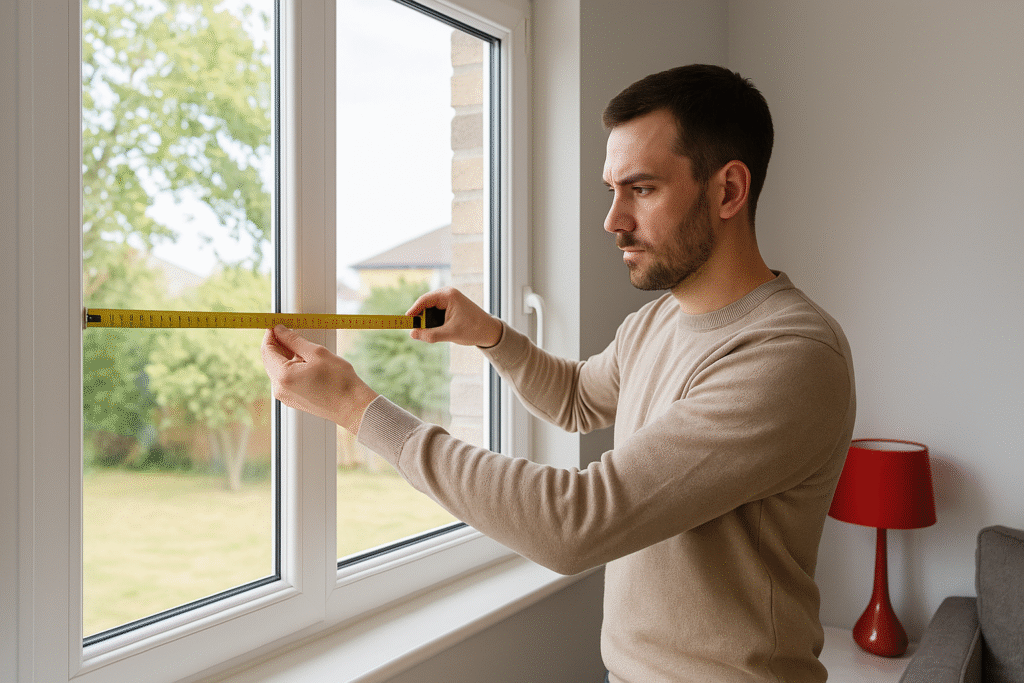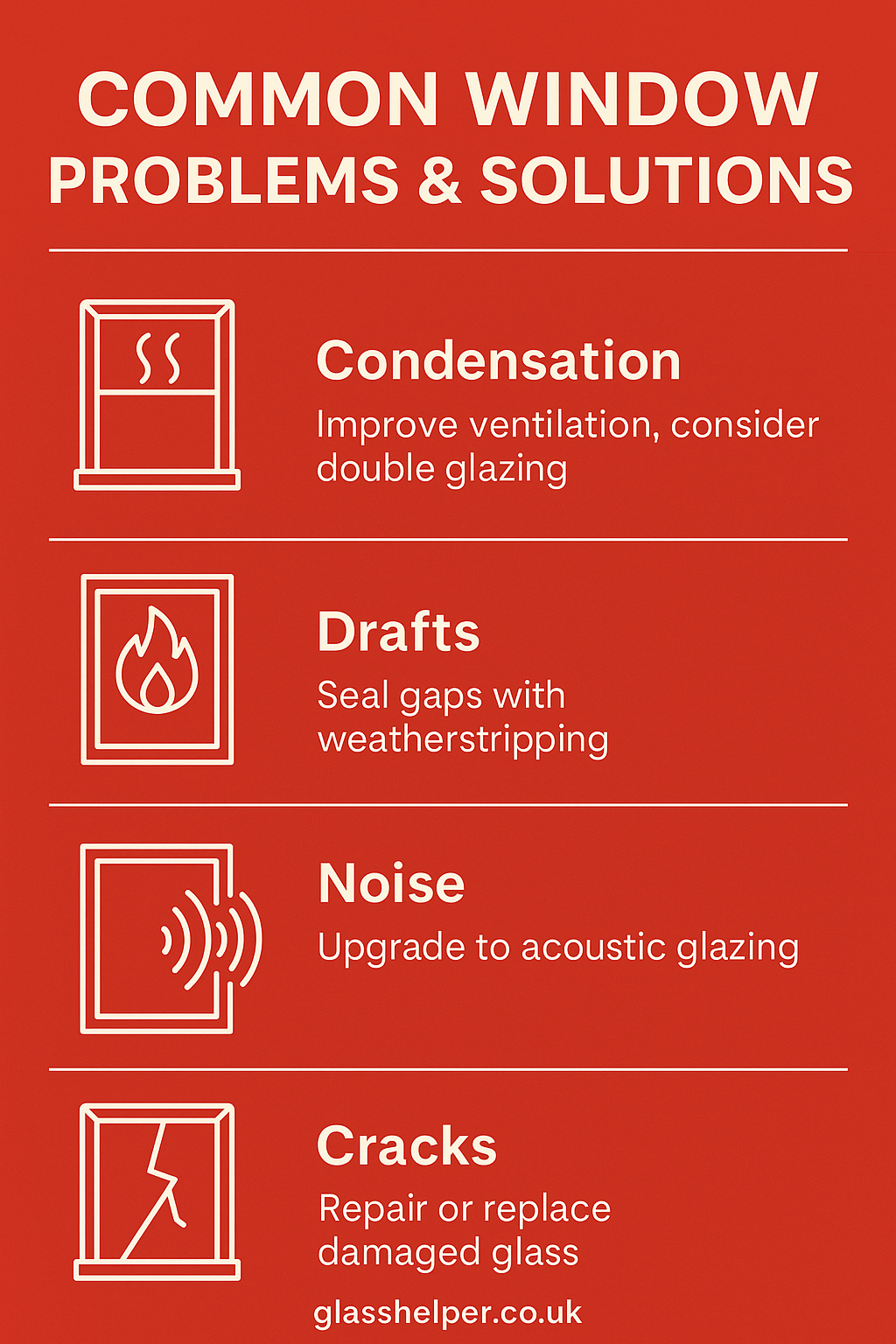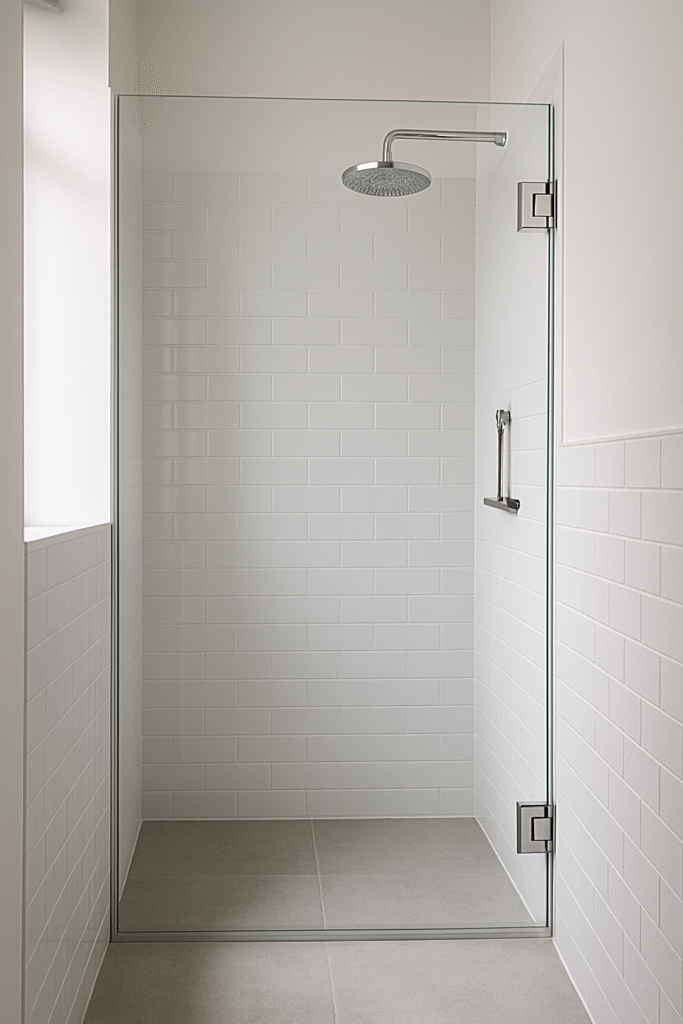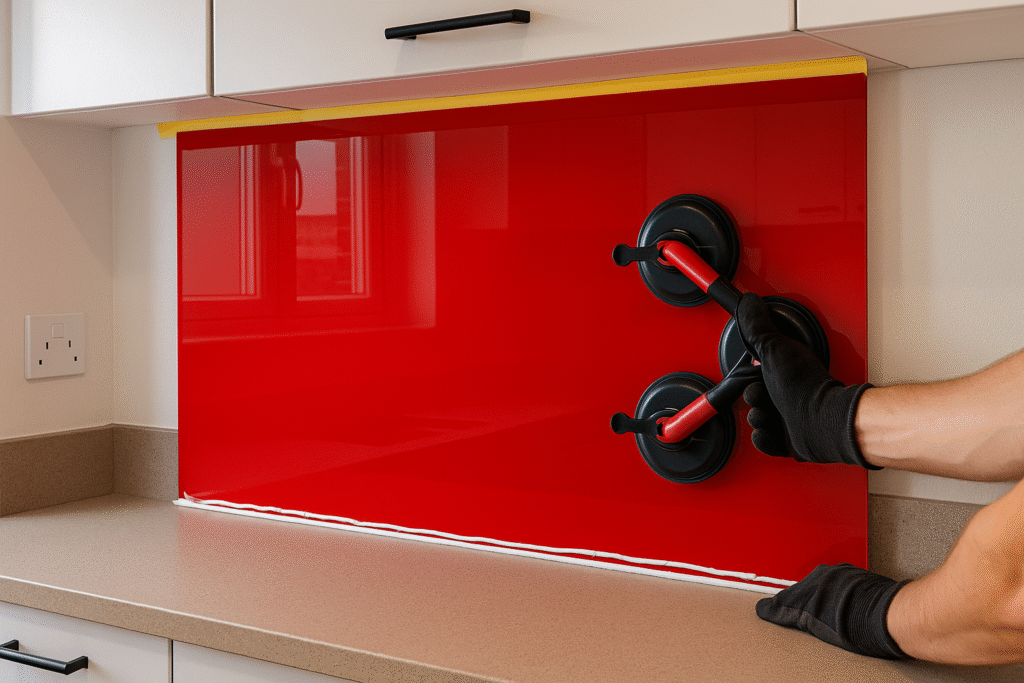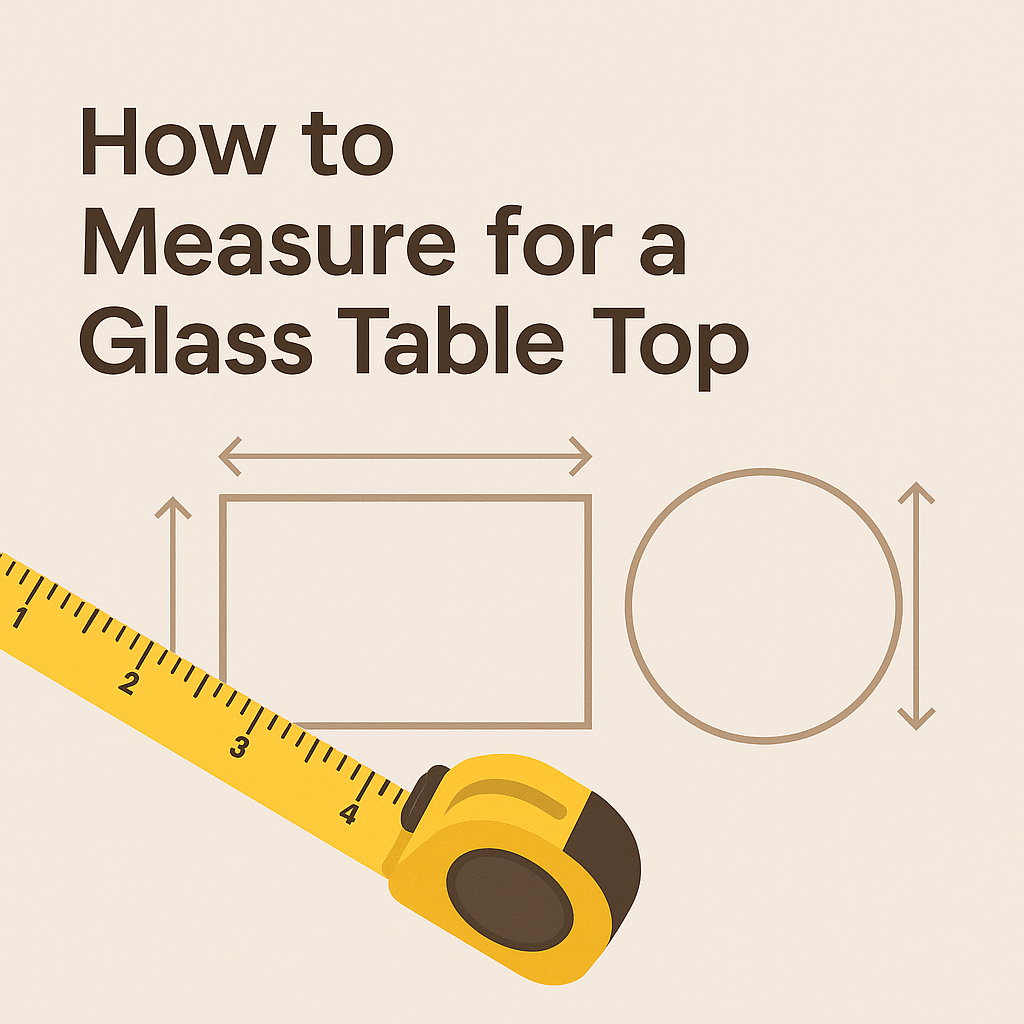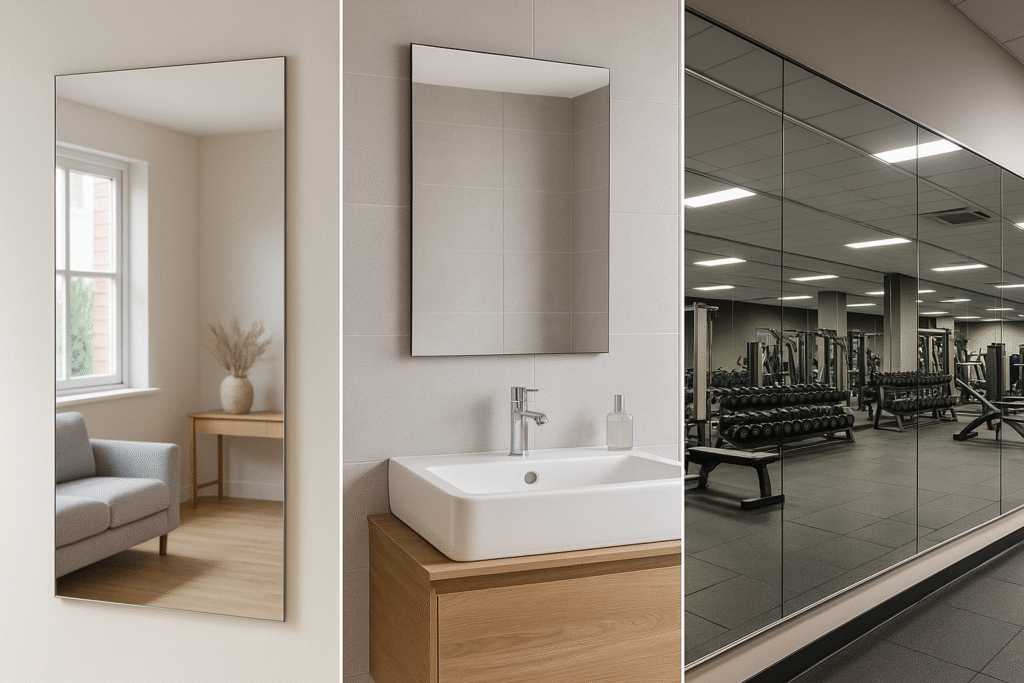
Mirror Thickness Guide: 4mm vs 6mm vs 8mm for Walls, Gyms & Bathrooms
Mirror Guide · 2025
Read time: ~6 minutes · Updated: 23 Sep 2025
Choosing the right mirror thickness is important for durability, look, and safety.
Whether it’s for your bathroom, wall décor, or gym installation, picking between 4 mm, 6 mm or 8 mm can make a difference.
This mirror thickness guide helps you understand what each thickness offers — and which one suits your project best.
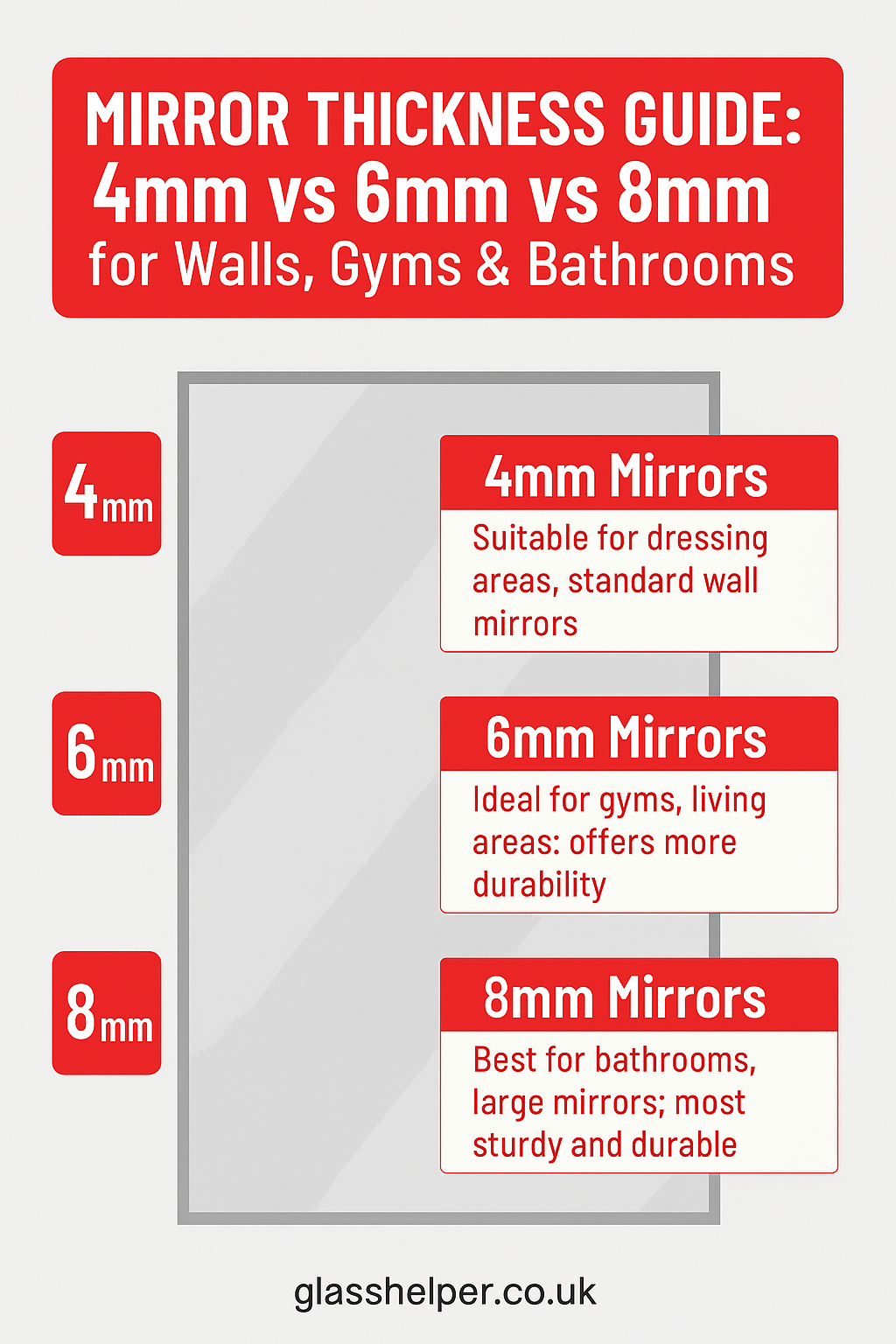
Mirror types & applications
Mirrors come in various thicknesses, each suited for different uses: bathroom vanity mirrors, wall-decor pieces, or large gym wall installations. The thickness you choose affects weight, durability, edge finish, safety, and cost.
4 mm mirrors
- Lightweight and easy to install for small or decorative mirrors.
- Less expensive, suitable where mirror edges are supported by frames.
- More likely to flex or chip if exposed edges are unprotected.
- Best used in bathroom cabinets, small decorative wall mirrors, or vanity surrounds.
6 mm mirrors
- The standard domestic mirror thickness for many wall-mount settings.
- Better rigidity; balanced weight vs cost.
- Exposed edges may still need polished finish for safety.
- Great for bathroom vanities, full bathroom walls, dressing rooms, hallway mirrors.
8 mm mirrors
- Premium thickness often used in gym walls or large commercial installations.
- Sturdy enough for large panels with minimal framework.
- Requires stronger fixings, heavier backing, and more careful handling.
- Best for mirror walls, large panels in gyms, or spaces where the mirror is a feature element.
Which thickness for which setting
- Small bathroom mirrors with frames → 4 mm is usually sufficient.
- Wall-mounted mirrors in living areas or bathrooms → 6 mm balances durability and cost.
- Gym walls or large feature mirrors → 8 mm delivers premium strength and minimal flex.
- Always specify polished or smooth edges if edges will be exposed.
- If in doubt, talk to your supplier about custom cut options and safety ratings.
For high quality cut-to-size mirror panels, check out Custom Mirrors or Tempered Glass if you want safety-certified options.
Sources & further reading:
GGF Glass Specification for Vertical Mirror Installations,
Trada Architectural Mirrors Design Guide
Need a mirror cut to your specifications?
Frequently asked questions
Is 4-mm mirror strong enough for a large wall?
Probably not—it will flex and may develop warping. Choose 6-mm or 8-mm for large spans.
Does thickness affect mirror clarity?
Not directly—clarity more depends on glass quality and backing. But thicker mirrors can seem more stable and less prone to distortion.
Are polished edges necessary?
Yes for exposed edges—polished or bevelled edges reduce risk of cuts and improve appearance.
Does tempered mirror make a difference?
Tempered mirrors add safety—when broken, tempered glass crumbles into small granular pieces rather than large shards. If safety is a concern (e.g. gym setting), look for tempered or safety-graded mirrors.
How much more expensive is 8-mm vs 6-mm?
Expect higher cost due to thicker material, heavier shipping, more precise cutting, and possibly upgraded mounting hardware. But cost difference is often justified for premium look and durability.

